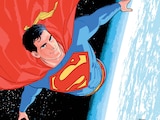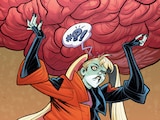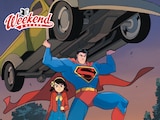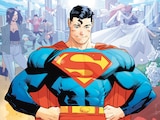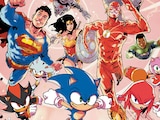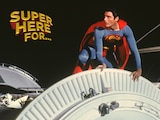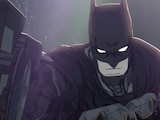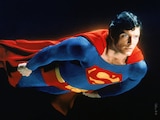Rosheen Hayes, the unusual hero of SLASH & BURN, works as a firefighter in an attempt to keep her pyromania under control. With a protagonist like that, you know that this new series by Si Spencer, Max Dunbar and Ande Parks is going to pack plenty of heat. But in the wrong hands, that could be a problem. If there’s one thing fire isn’t, it’s static. So in a medium that tells its story using still images, how do you make sure that fire comes across as kinetic, explosive and alive?
We posed this question to Dunbar and series colorist Nick Filardi, to see what insights they could provide. Here’s what they had to say about drawing fire that’s realistic enough to burn.

Max Dunbar
Rosheen has a really complex relationship with fire. It’s something she loves, something she fears, and she is completely obsessed with it.
Rosheen interacts with the flames in many different ways and situations. The fire is really one of the main characters in this book, and I wanted to do my best to make it as dynamic and expressive as the people it interacts with. There are really two main ways I go about drawing the fire, depending on what Si has written.
- One half of the fire is sort of seductive. It draws Rosheen in almost hypnotically. In these instances, I try to use really fluid lines to convey a liquid-smooth look to the flame, having it twist and turn a little, but in a non-threatening, subdued way. I tend to use longer, unbroken lines and shallow, smooth curves when I draw. If there is smoke in these cases, it’s usually lazily twisting around the flame.


- The other, more obvious half to the fire is the destructive, dangerous side. I do my best to show the pent up energy waiting to explode forward in heat and light, so I try and make the lines a little more kinetic, sometimes jagged or sharp. I might put in a corner or a sharp edge to the flame to try and make it look a little more dangerous, and make it less smooth. I also might add some random frenetic sparks or bits of flaming debris to make the whole situation more chaotic and unpredictable looking. If smoke is involved in these cases, it tends to billow in huge oppressive clouds.


Nick Filardi
Fire is always a challenge to a colorist, and for SLASH & BURN it needed to not only feel like genuine fire, but it needed to be its own character.

The first thing you want out of fire is for it to feel hot, so I try to make the core of the flame white, and the lightest thing on the page. To play that up, you have to have the color in the scene reacting to the white-hot nature of the fire. The key to making it look real and organic is to keep the core and color rough around the edges. When you keep it Photoshop-computer smooth it looks less like real fire and more like a flame decal on the side of a hot rod car. On larger blazes, flying embers are important to include that aren’t in the original drawing. This gives the fire a sense of unpredictability and recklessness. Smoke is just as important to amplify the urgency and scope. By the fire lighting the smoke, not only does it further dominate the page, but it also frames the blaze, trapping the reader’s gaze, giving him or her a parallel moment with the pyromaniac Rosheen.

On the edges of the white-hot core, you get to start to play with color. Many times in SLASH & BURN, the fire actually shifts color depending on what is burning, giving it an added dimension of being its own character. It was important not to be subtle with that to show the mood of the flame. To further play up that character, I try to give it a special relationship with Rosheen by matching her environment/attire/car/apartment to the flame itself while also downplaying the other characters by keeping them in cooler tones. This lets the fire have a life and relationship with the characters in SLASH & BURN that it doesn’t have in any other book.
SLASH & BURN #1 is now available in print and as a digital download. For more from Dunbar, Filardi and the rest of the team, be sure to read our interview with the creators.


